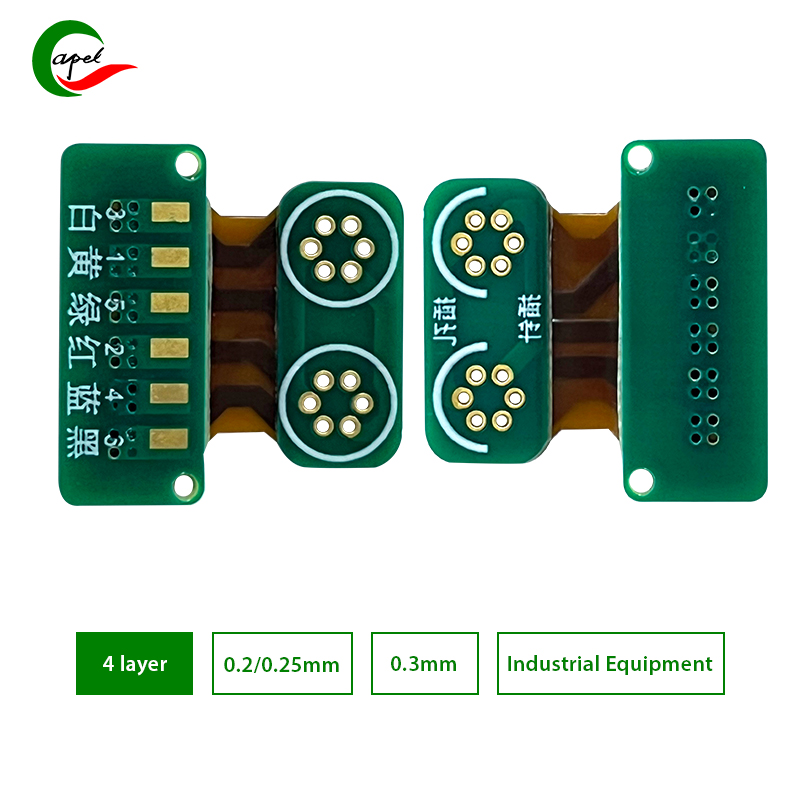In recent years, rigid-flex PCBs have become popular due to their unique combination of flexibility and durability. This type of circuit board allows designers to create innovative and space-saving solutions, especially in applications where traditional rigid boards cannot meet the requirements. While rigid-flex PCBs offer a range of design possibilities, there are still some limitations that need to be considered, particularly with regard to bend radii.
The bend radius of a PCB is the smallest radius at which the board can be safely bent without causing any damage to traces or components. For rigid-flex boards, bending radius is a key parameter that directly affects the overall performance and reliability of the circuit board.
When designing a rigid-flex PCB, you must understand the limitations imposed by the bend radius. Exceeding the recommended bend radius may cause problems such as trace delamination, breakage, or even component failure. Therefore, this aspect must be carefully considered during the design phase to ensure optimal functionality and longevity of the board.
The bend radius limit for rigid-flex PCBs depends on a variety of factors, including construction materials, number of layers, and overall board thickness. Let’s delve deeper into each factor to better understand their impact:
1. Materials of construction: The choice of materials, such as the base material and the flexible materials used, directly affects the bend radius limit. Different materials have different flexibility characteristics, which affects the minimum bend radius. For example, polyimide is a common choice for flexible parts due to its excellent flexibility and high temperature resistance. However, material selection must be carefully balanced, as using a material that is too flexible can cause excessive bending and possibly damage to the board.
2. Number of layers: The number of layers of rigid-flex board will affect the bending radius limit. Generally speaking, the more layers a board has, the larger the bending radius needs to be. This is because the additional layer introduces more rigidity, making the board more difficult to bend without straining the traces or causing other mechanical problems. Designers should carefully consider the number of layers required for a specific application and adjust the bend radius accordingly.
3. Overall thickness of the plate: The thickness of the plate also plays a vital role in determining the bend radius limit. Thicker plates tend to have larger minimum bend radii than thinner plates. As board thickness increases, the material becomes stiffer, requiring a larger bending radius to avoid any potential damage.
When considering these factors and determining the flex limits for rigid-flex PCBs, it is also critical to consider any external factors that may affect the board’s performance. For example, specific application requirements such as required flexibility or exposure of the circuit board to extreme temperatures may further impact bend radius limits.
To ensure optimal bending radii for rigid-flex boards, it is recommended to work closely with experienced manufacturers and designers who have extensive knowledge and expertise in this field. They can provide valuable insight, guidance and support throughout the design and manufacturing process. Additionally, utilizing advanced simulation tools and conducting thorough testing can help validate the chosen bend radius and ensure board reliability and longevity.
In summary, although rigid-flex PCBs offer a wide range of design possibilities, their bending radius limitations need to be considered. The choice of structural materials, number of layers and overall panel thickness directly affects the bend radius limit. By carefully balancing these factors and considering specific application requirements, designers can create strong and reliable rigid-flex PCBs that meet the required flexibility while avoiding any potential issues related to bending. Working with experienced professionals and leveraging advanced simulation tools can greatly facilitate the success of rigid-flex PCB designs.
Post time: Sep-19-2023
Back







